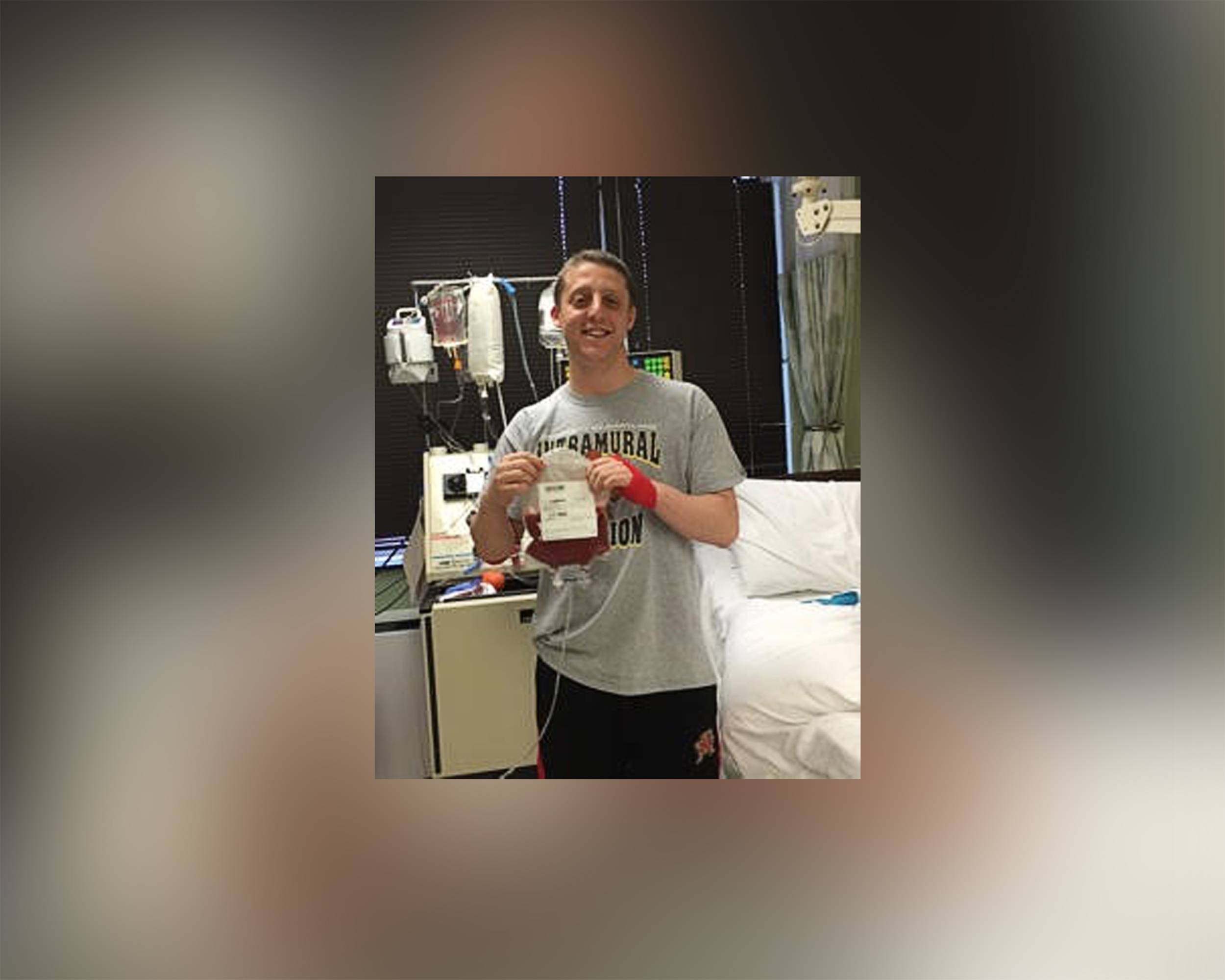Corey Ruben received a text message during class Feb. 9.
“Hello Corey-Pls call Gail@GiftofLife Foundation. Patient u tested 4 is ready to a transplant! Need to speak to u today if possible,” it read.
Ruben, a senior accounting and marketing major, had added himself to the Gift of Life bone marrow registry at a Terp Thon table in 2013 with a simple cheek swab. Potential donors can be called anytime between their initial registration and the day they turn 61, according to the Gift of Life website. On average, it says, “one in 1,000 of the donors … save a life each and every year.”
Now it was Ruben’s turn.
“I was really excited,” Ruben said. “I always think helping other people is important, but the opportunity to give somebody who is struggling from cancer another chance of life … I saw it as my responsibility as a human being.”
In the weeks following the text message, Ruben had a physical and blood tests to ensure he was healthy enough to donate. He received injections for five days leading up to the procedure, which prepared him for his impending donation by increasing his blood stem cell count.
The Gift of Life organization shared the patient’s diagnosis, age and sex with Ruben, who learned that his blood stem cell donation would go to an adult male with leukemia.
“I know how awful cancer is. It’s affected my family, it’s affected some of my best friends,” Ruben said. “No matter what I had to go through through[out] this process — compared to what he has to go through every day, is like, nothing.”
He spent about five hours Wednesday in Inova Blood Donation Center in Annandale, Virginia, while a machine drew his blood, separated the stem cells out and returned the remaining blood into his body.
According to Gift of Life, 80 percent of donors give peripheral blood stem cells, as Ruben did, rather than of bone marrow.
“People are scared to join the registry because they don’t want the responsibility,” said Tyler Feigenbaum, the Gift of Life campus ambassador at this university, “or they’re really just afraid of the whole bone marrow transplant process … but technology has improved.”
As part of the Campus Ambassador Program, Feigenbaum organizes opportunities on the campus for students to register as donors, including at Terp Thon tables like the one Ruben signed up at. The program has more than 100 college representatives nationwide.
Sarah Weiss, who was a campus ambassador before graduating in December, now works as Gift of Life’s community engagement coordinator.
“The work that we do literally saves people’s lives and it’s something so simple and so easy,” Weiss said. “It only takes two minutes for the donor to sign up.”
Donors ages 18 to 25 are the second-most frequently selected group of transplants, according to the Gift of Life website, behind the 26-to-35 demographic.
Only 30 percent of patients are able to find a suitable match for donation in their family, meaning 70 percent of the time, they need to look outside of their family.
“It’s an unbelievable experience to be able to actually donate and then go through with the process,” Feigenbaum said. “It’s very rare to be a match.”



